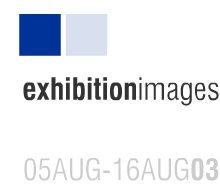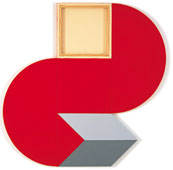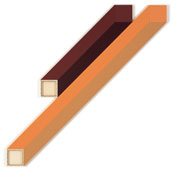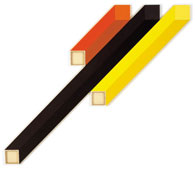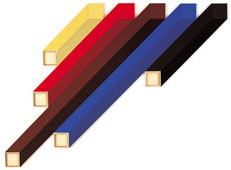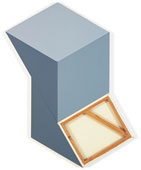| |
and
then what? (and then what?)
by Robert Cook
A few years ago Paul Hinchliffe and I sat in a Leederville coffee
shop talking about the weather. It was raining. We were clear about
that. Which was good, because I was far from clear about a definition
of Paul's "art practice". That's what we were really there
to discuss, for a newspaper article I was trying to write. Paul
told me he'd made sculptures on the beach at Quinns Rock. That he
left them there. Didn't even take photos. Maybe people stumbled
upon them. Maybe they were puzzled. Maybe they weren't. He told
me how he sat down with the international atlas, found a street
name and sent a package off to an unknown addressee. It was a gift.
He talked about the Hiematlos (homeless) project. Performances in
carparks. Subterfuge in art galleries. Conceptualism and hobo-ism
uniting. Just like Jack Kerouac and Richard Long said it would.
We shook hands and I ran to my car. I got soaked to the skin. I
shivered, went over my notes in the office. The rain got harder
as I typed them out, drowning out my keyboard plucking. My editor
didn't like the result. There was no hook. He'd as soon can the
story, if I didn't mind. And I didn't. Not really. For me, the interview
was just another chance to piece together a puzzle I'd been trying
to figure out for a decade or so, since experiencing Paul as a lecturer
at art school.
To me, dopey and callow to the marrow, Paul was the unexpected incarnate.
I'd arrived there, you know, just wanting to make stuff. Paul never
made stuff. Or the stuff he made was more like anti-stuff - blank
books, verbal images of Pythagorean formulae. Paul was the guy we
first heard about Lacan and Derrida from. But, unlike so many of
us who later delighted in what riot grrrl band Le Tigre call
Fake French [1], he wasn't name-dropping. And he wasn't "applying
theory" either. He was inside it, tied up and twisted. To be
honest, it was kinda painful to see. Yet, from remote Lacanian lacunae
he made us ask ourselves what we were looking to art school for.
He made us realise that art is fundamentally about the transference.
Art is about the questions we ask of it, the responses we want back
from it. So, when identity politics were all the rage, when lines
were being drawn in the sand, Paul was ontological man. Yes, it
was unsettling. He frustrated us enough to make us think for ourselves.
At the same time he teased us. Thinking for ourselves, properly,
was a discursive impossibility. With Paul there were no platitudes
to settle upon.
So you'll forgive me if I admit I'm suspicious of his new work.
Work in a gallery no less. Work that seems sumptuous, even. I don't
trust my reaction, my pleasure. Mostly I don't trust him. I've been
burnt enough times to know that any claim to sensory pleasure is
deeply rooted in a critique of such phenomena.
Okay, critique is the wrong word. Utopia doesn't await. Desire rules
that out. Like Ramsay Street, art is a cul de sac to which we return
again and again searching for something, finding that content, context,
perception, and plain old longing are bound into the one infuriatingly
dumb object - a thing on the wall. Or Harold Bishop.
So, sure, Paul is putting things on the wall these days. And then
what?
We can puzzle them out, but will they have stopped functioning,
will we be complete when we're done sleuthing? This mirrors Yeats
queries in his poem "What Then?":
The work is done, grown old he thought,
According to my boyish plan;
Let the fools rage, I swerved in naught,
Something to perfection brought;
But louder sang the ghost, "What then?" [2]
Despite our best intentions, nothing will be resolved. The work,
(all work), remains fugitive, a series of offerings, openings and
refusals, doors slammed in the face, heads turned abruptly.
Like Lacan, Paul refuses to play the good daddy, to be our friend,
to console. I find no comfort in this.
And yet, I'm invigorated. Though I want the work to love me back,
to let me love it, there's something tragically beautiful about
the dilemma. The new work toys with this, makes us think it will,
maybe, in the future, when the time is right and the moon is high.
It's something old Gatsby would understand, and my guess is Paul
and Jay would have been soul mates, knowing that everything is out
of reach, even themselves, even as they dream it otherwise.
This too is a projection. Narrative, poetry, all that. Another self-made
consolation.
It's annoying. Paul reminds me how much I need these things, how
weak I am.
Again, I find no comfort in this. And can find no graceful way to
exit this text.
There is always another "what then?"
And maybe I still don't really get it anyway.
It's raining today. Did I mention that?
Notes
[1] Le Tigre. (2001). "Fake French", on Feminist
Sweepstakes, Tilt Records: Sydney. They sing: "I've got - the
new sincerity. I've got - a secret vocabulary. I've got - dialectical
sprecstime. I've got - a conceptual stunt double. I've got - site
specificity. I've got - flow disruption. I've got - wildlife metaphors.
I've got - post-binary gender chores....My Fake French is hot. You
can't make me stop".
[2] W.B. Yeats. "What Then?", in Seamus Heaney, (2002).
Finder's Keepers: selected prose, 1971-2001. faber and faber:
London. p.109.
*prices
valid 2003
|
|
|
|
|
|
|
no
answer
acrylic, canvas, pine
181 x 181cm
2003
$6600
|
...
to catch a herring #2
acrylic, calico, tasmanian oak
140 x 140cm
2003
$1650
|
|
|
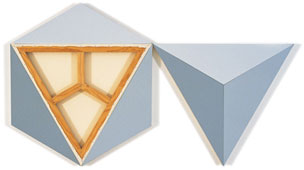 |
|
|
|
a
round mirror
acrylic, canvas, pine
104 x 90 + 78 x 90cm
2002
$3200 |
...
to catch a herring #3
acrylic, calico, tasmanian oak
160 x 190cm
2003
$2400
|
|
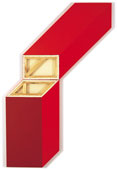 |
|
|
|
the
last leaf
acrylic, canvas, pine
203 x 126cm
2003
$6000
|
...
to catch a herring #4
acrylic, calico, tasmanian oak
160 x 190cm
2003
$3100
|
| |
|
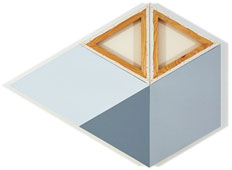 |
|
| |
|
blue
paper
acrylic
/ canvas / pine
95 x 132cm
2002
$2300
|
...
to catch a herring #5
acrylic, calico, tasmanian oak
160 x 220cm
2003
$4100 SOLD
|
| |
|
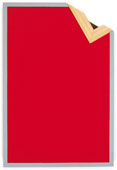 |
|
|
|
the
white owl
acrylic, masonite, pine
31 x 21.5cm
2003
$770 SOLD |
a
large window
acrylic, canvas, pine
158 x 132cm
2002
$4700
|
|
|
 |
|
|
the
loving calm
acrylic, canvas, pine
41 x 203cm
2003
$1650 SOLD |
|
|
|
